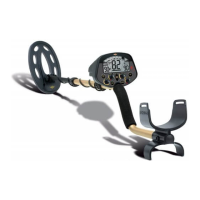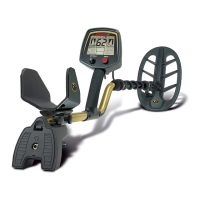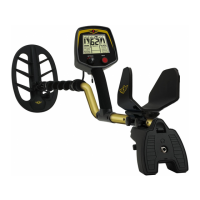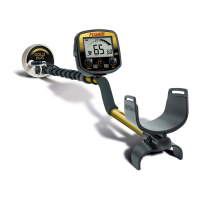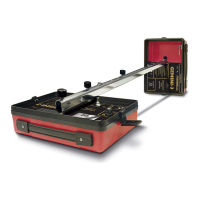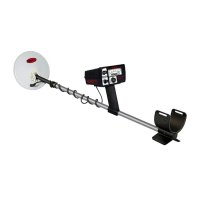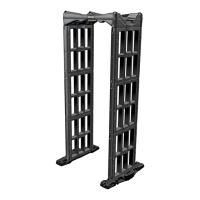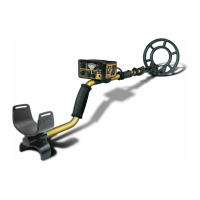9
THE BASICS OF METAL DETECTING
This metal detector is intended for locating buried metal objects. When
searching for metals, underground or on the surface, you have the following
challenges and objectives:
1. Ignoring signals caused by ground minerals.
2. Ignoring signals caused by metal objects that you do not want to find,
like nails.
3. Identifying a buried metal object before you dig it up.
4. Estimating the size and depth of objects, to facilitate digging them up.
5. Eliminating the effects of electromagnetic interference from other
electronic devices.
Your metal detector is designed with these things in mind.
1. Ground Minerals
All soils contain minerals. Signals from ground minerals can interfere with
the signals from metal objects you want to find. All soils differ and can differ
greatly in the type and amount of ground minerals present. This detector
has proprietary circuitry to automatically eliminate interfering signals from
minerals that occur naturally in the ground.
NOTE: This detector will not completely eliminate interference from all
types of minerals. For example, the detector IS NOT designed for use on
wet sand saltwater beaches. Another example of soil this detector will not
eliminate is any soil containing large concentrations of iron oxides, which
are usually red in color.
2. Trash
If searching for coins, you want to ignore items like aluminum foil and nails.
You can see the Target-ID of the buried objects, listen to the sounds and
then decide what you want to dig up. Or, you can eliminate unwanted
metals from detection by using the different Modes or NOTCH feature or
use the Custom mode to create your own discrimination settings.
3. Identifying Buried Objects
Metal objects are identified along the 9-segment Conductivity graphic symbols
and with a large 2-digit target ID number in the center of the screen. Both are
indicators of the relative electrical conductivity of different objects. Segments to
the right indicate more conductive targets. Iron objects will be illuminated with the
Fe symbol. The Fe (iron) category will display target ID numbers from 1 to 19.
Gold, nickel and brass objects will be illuminated in the
“Gold” group .
Silver and copper objects will be illuminated in the
“Silver” group .
4. Size and Depth of Buried Objects
The 3-segment graphic indicates the relative depth of a buried metal object.
This graphic can indicate the relative size of different objects or their
distance from the searchcoil. For a given object, the more distance
between it and the searchcoil, the more segment lines illuminated.
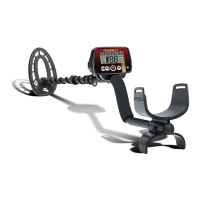
